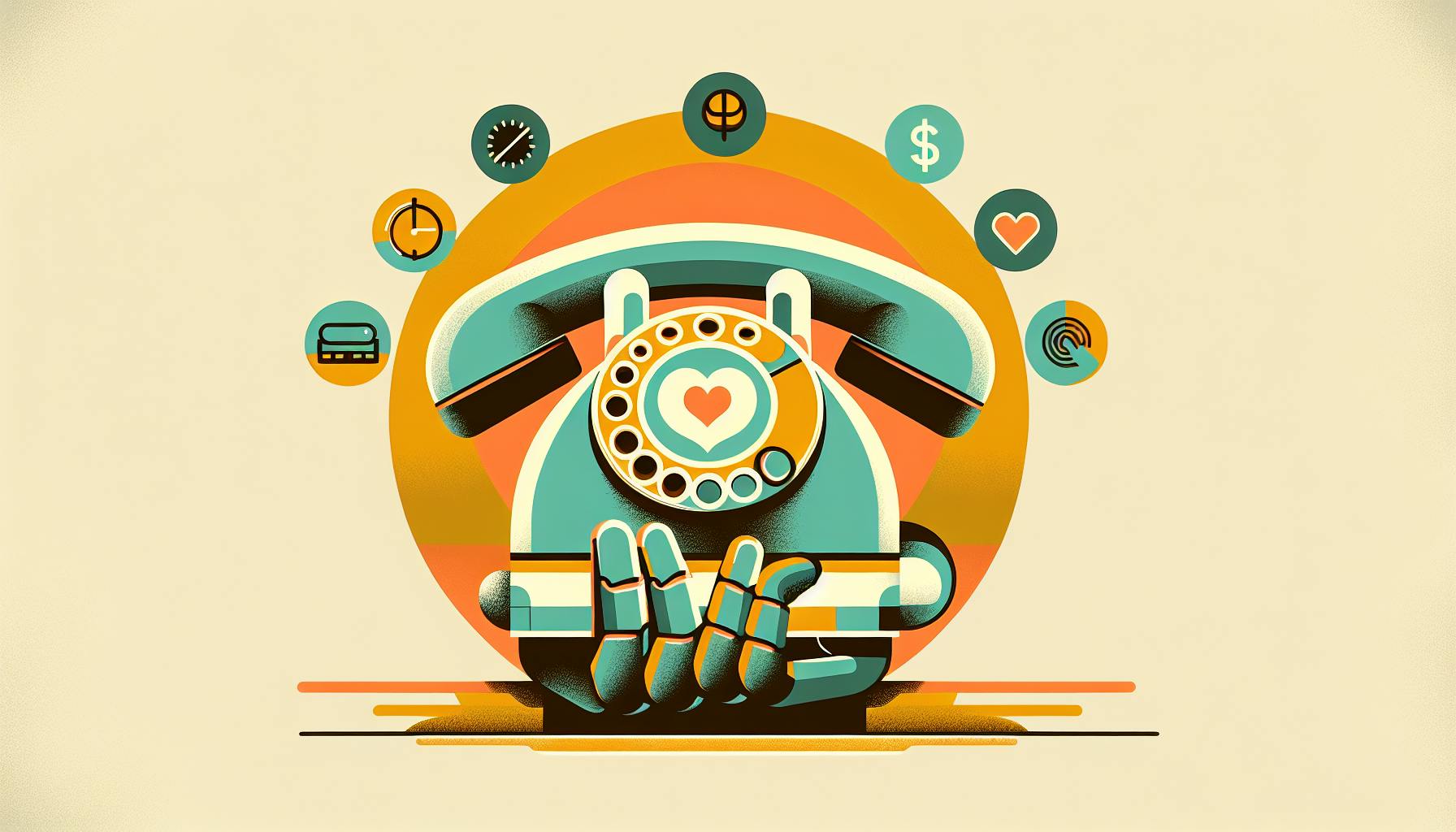Ensuring your customer support team provides top-notch service is vital for customer satisfaction and loyalty. To achieve this, implementing effective Customer Support QA (Quality Assurance) practices is key. This guide covers the essentials:
- Why Customer Support QA is Important: It ensures consistent, high-quality customer service, identifies areas for improvement, and helps maintain your brand's reputation.
- Understanding Customer Support QA: It involves regular checks on interactions between your team and customers, ensuring they meet your company's standards.
- Building an Effective QA Program: Set clear goals and metrics, choose the right tools, and develop a solid QA framework.
- Measuring and Improving Your QA Program: Track key performance indicators and use QA data to identify training opportunities and improve processes.
- Advanced QA Strategies: Incorporate AI and machine learning for smarter QA and integrate QA with CRMs and help desks for seamless operations.
By focusing on these areas, you can ensure your customer support team excels, keeping your customers happy and loyal.
Defining Quality Assurance for Customer Support
Quality assurance (QA) in customer support means regularly checking the support your team gives to customers. This is done through looking at phone calls, emails, chats, and social media interactions. The main point is to make sure these conversations are helpful, follow the company's rules, and solve customer problems well.
In simple terms, customer support QA checks if:
- The way your team talks to customers is friendly and follows the company's guidelines.
- Customers are getting their problems solved effectively and quickly.
- There are any issues stopping customers from having a good experience.
- There's anything that can be made better, like tools, how information is shared, or training.
By checking and scoring how well customer service chats or calls go, teams can make sure they're always giving great support, even as the company grows.
The Goals and Benefits of Customer Support QA
Having a QA process for customer support is really helpful because:
- Customers are happier - When their problems are solved quickly and well, customers are more likely to stick around.
- It saves time and money - Finding and fixing issues means your team can help customers faster, which saves money.
- Better personalization - Feedback from QA can help your team talk to customers in a more personal way.
- Keeps quality up as you grow - QA makes it easier to train new people and keeps everyone on the same page about how to help customers.
Also, good QA practices lead to solving problems faster, getting things right on the first try more often, following rules better, and making the team happier.
Overall, QA is important because it makes sure customer service helps the company keep customers, work efficiently, and grow properly. It's all about making sure every chat or call leaves the customer happy.
Building an Effective QA Program
To make sure your customer support is top-notch as your company gets bigger, it's key to have a solid plan for checking how well your support team is doing. Here's how to set up a strong program for making sure your customer support is always great.
Setting Clear Goals and Metrics
First off, decide what you want to achieve with your QA program. You might want to:
- Make customers happier
- Solve problems faster
- Get things right on the first try more often
- Make sure all support agents are giving the same level of service
Choose clear ways to measure success for each goal. You could look at:
- How satisfied customers are
- How long it takes to solve a problem
- How often customers need to contact support again
- How many conversations you check
Set clear targets for these measures so you know if you're hitting your goals. Check these targets regularly to keep them up-to-date.
Selecting the Right QA Tools
Manual Review
- Pros: Gets you deeper insights, great for coaching
- Cons: Takes a lot of time, hard to do a lot
Automated Tools
- Pros: Checks more conversations quickly, can handle more as you grow
- Cons: Might miss the little details, can't catch everything
Think about how many support conversations you have, how quickly you're growing, and what you need from reviews when deciding between manual or automated tools, or maybe using both. Some tools are better for chat or calls.
Developing QA Frameworks and Processes
Make a scoring system to keep evaluations consistent. Rate conversations on things like:
- Solving the problem
- Being kind and understanding
- Following the rules
- Making it personal
Give feedback to agents, showing what's working and what can be better.
Use what you learn to improve your help documents, how you do things, and training. Watch how things change over time.
Sticking to your QA plan helps make sure all support agents are doing their best.
Measuring and Improving Your QA Program
Key Performance Indicators to Track
To make sure your customer support QA is doing its job, keep an eye on these key numbers:
- Agent score improvement - See if your team members are getting better over time based on their QA scores. Aim for a small increase, like 5-10%, every few months.
- Customer satisfaction - After someone talks to support, ask how they felt about the help they got. You want most people (80% or more) to be happy.
- QA coverage - Make sure you're checking enough support talks or emails, at least 10-20% of them, to catch any problems.
- QA accuracy - Have a few people review the same conversations to make sure everyone agrees on the scores. Try to get everyone on the same page 90% of the time.
Watching these numbers helps you see what's working and what needs to get better.
Leveraging QA Data and Insights
To really use your QA data well, look for:
- Agent strengths & weaknesses - Track how each team member is doing over time to see where they need help or are doing great.
- Process gaps - If a lot of people are losing points for the same reason, there might be a bigger issue with how things are done.
- Training opportunities - If people are struggling with product knowledge, it's time for more training.
- Tool issues - If many people have trouble with the same tool, you might need a new solution.
Summarize your findings to share with your team and figure out what to focus on next.
Improving Through Regular Evaluation Cycles
It's good to take a step back every now and then (like every three months) to look at the whole QA program.
Things to check:
- Is your scoring system still matching up with what's important for your business?
- Are your goals and processes helping things get better over time?
- Are you checking enough conversations to find problems?
- Are your tools making things easier or harder?
Adjust your QA based on what you find to keep it in line with your goals and make sure it's working as well as it can.
Doing this regular check-up helps you keep your QA program on track, making sure it's always helping improve customer service and meeting business needs.
Advanced QA Strategies and Technologies
Incorporating AI and Machine Learning
Using AI (Artificial Intelligence) and machine learning can make checking on customer support a lot faster and smarter. Here's how they can help:
- Understanding language can figure out what customers are really saying in their messages. It looks at the words used to catch the mood, main points, and what customers want. This means the system can automatically see if a chat was helpful or not.
- Turning voice to text helps turn what's said on calls into written words. Then, the language tool checks this text to help review calls quicker.
- Smart scoring learns from past reviews to get better at scoring new chats or calls by itself. This means it can quickly tell how well a conversation went without bias.
- Spotting patterns helps find trends in what customers are talking about. If many people are unhappy about a product, it's a sign to look into improving training or guides.
- Looking ahead uses old data to guess how future chats might score. This helps team leaders know who might need more help or training ahead of time.
The big plus of using AI and machine learning is they can check every chat or call fairly, letting the team spend more time helping agents get better instead of just reviewing their work.
Integrating QA with CRMs and Help Desks
Linking up QA tools with CRMs (customer relationship management systems) and help desks makes everything smoother. Here's why it's good:
- Everything in one place - QA folks can see all customer chats, details, and notes in one spot. This full view helps them score more accurately.
- Sharing info - Feedback from QA can go right into customer profiles and tickets, making it easy to see later. This means everyone can learn from past chats to help the same customer better next time.
- Easier for agents - When all the systems work together, agents can focus on helping customers instead of juggling different tools.
- Better insights - Looking at all customer info together reveals tips on how to improve service across the board. Leaders can use this info to make things better for customers.
Putting QA, CRM, and help desk tools together means no more gaps in understanding customer needs. With a smooth flow of info, support teams can give better, more consistent help based on what they know about customers.
sbb-itb-bd9cbc6
Case Studies and Best Practices
Spotify's Focus on Quality Conversations
Spotify really pays attention to making sure their customer service talks are top-notch. They don’t just look at numbers, but also how well their team connects with customers on a human level. They use special ratings that check if the service team is really listening and understanding customers’ feelings.
Key points of their strategy include:
- Rating conversations on how well agents listen, understand feelings, and fully solve issues
- Giving agents feedback that’s tailored to what they need to improve
- Spotting common problems customers have and using those insights to make training better
- Letting agents have a say in how the QA process works, which makes them more involved
By focusing on these quality chats, Spotify made their customers a lot happier. It also built a team culture that puts customers first.
Takeaways for Customer Support Leaders
Here’s what customer support leaders can learn from Spotify:
- Get your team involved. Let them share their thoughts on QA. This helps them care more about it.
- Link QA goals with big company goals, like keeping customers around longer.
- Turn QA findings into real actions to make training better and fix workflow issues. Don’t just review; make things better.
- Look at more than just numbers. Think about how well your team connects with customers emotionally.
- Use QA to get better. Connect what you learn from QA to improving training and how things are done.
Getting QA right is key for offering great support as your business grows. By focusing on real conversations and tying QA to your business goals, you can make customer support even better.
Conclusion
Keeping Customer Support QA Going Strong
Having a good QA (Quality Assurance) program is really important for any business that wants to keep its customers happy with great service. By always checking on how customer support talks and helps out, businesses can make sure they're really solving problems and making customers feel valued.
This guide has shown that doing QA the right way means customers get their issues fixed the first time they ask, feel happier with the service, don't have to wait too long for help, and the support team works better together. All of this helps keep customers coming back.
But remember, QA isn't just a one-time thing. It's about always getting better and making sure your service stays top-notch.
Here are some simple tips for keeping your service quality high with QA:
- Keep updating your QA rules to fit what your business aims to achieve and what customers expect. Talk to your team and leaders to see what parts of QA are helping the most.
- Act on what you learn from QA to improve tools, training, and how things are done. Don't just check - make changes based on what you find.
- Share what you learn with everyone in the company so all teams can do a better job for customers.
- Try to use automation to review more customer chats quickly and without bias.
- Tell your team about changes that were made because of their feedback.
By always working on making QA better and making it a part of daily work, businesses can turn customer support into something that really helps them grow. The effort is worth it because it leads to happier customers, a more effective team, and reaching your business goals.
In the competitive world we live in, being known for great service can really set you apart. A strong QA program makes sure your customers keep getting the kind of help that makes them want to stay with you.
Related Questions
What is the QA process for customer support?
To set up a quality check system for your customer support, follow these steps:
- Decide what excellent service looks like for your business and set rules for how to talk to customers.
- Make a checklist or scoring system to review phone calls and chats.
- Have experts go through some interactions or use tools to automatically check many at once.
- Give your team specific feedback on what they're doing right and what they can do better.
- Look for patterns to improve training, tools, and how you do things.
Doing these steps helps your team solve problems quickly and keep customers happy on a regular basis.
How can you improve QA customer service?
To make your customer service better, you should:
- Make sure your bosses are all in on quality checks.
- Keep track of common mistakes to know where to focus training.
- Spot where your process might be weak.
- Teach your team to really listen and understand customers.
- Use what customers say and their ratings to make changes.
- Check if your tools and systems can be better.
Working on these areas can really make your customer service stand out, making customers happier and more likely to stick around.
What are the metrics of customer support QA?
Important numbers to watch in customer support quality checks include:
- How fast you answer
- Solving the issue the first time they reach out
- How long it takes to handle an issue
- How happy customers are after getting help
- Net Promoter Score (how likely customers are to recommend you)
- Customer effort score (how easy it was for them to get help)
Keeping an eye on these can show you how you're getting better at helping customers quickly and more effectively.
What is the role of quality assurance in customer service?
Quality assurance in customer service means checking calls and chats to see if they meet high standards. This is important because it helps:
- Find what's making customers unhappy
- Train your team to get better
- Improve how things are done and the tools used
- Keep customers happy and coming back
Regular quality checks make sure your service stays great, which helps keep your customers loyal.



